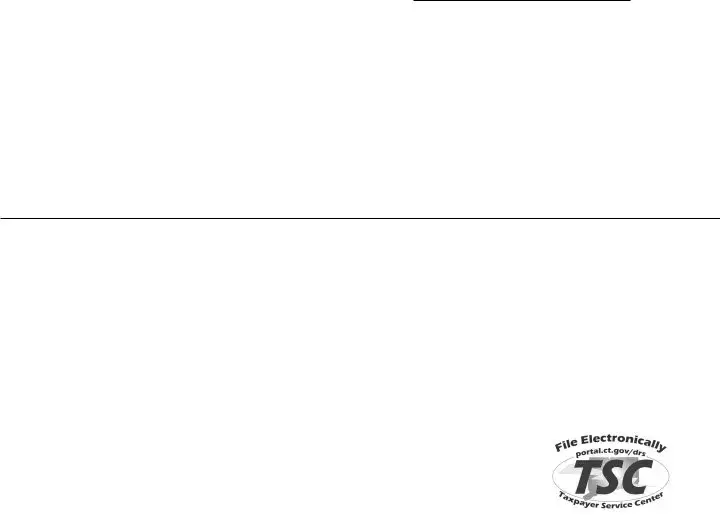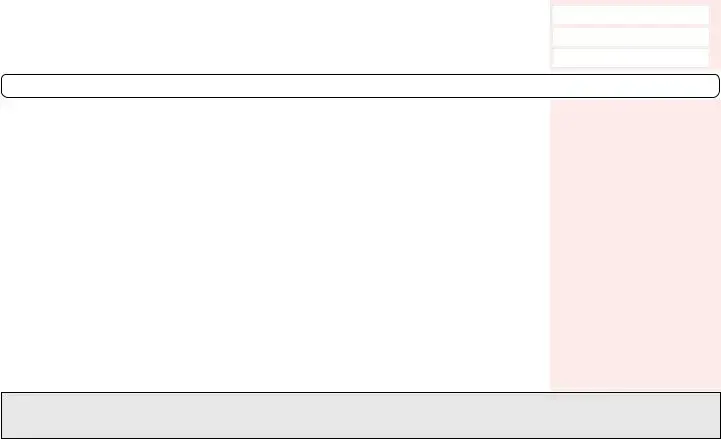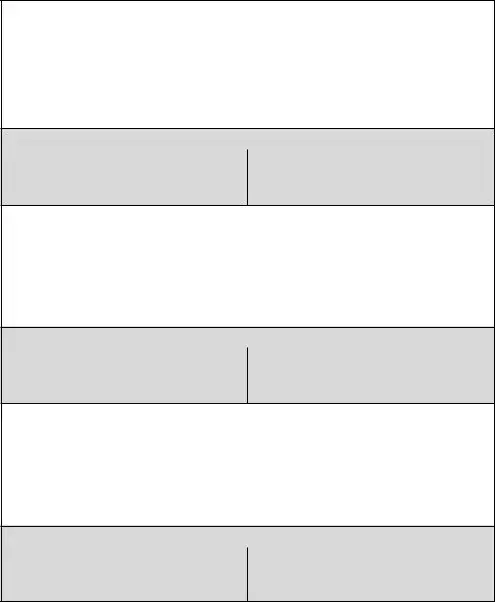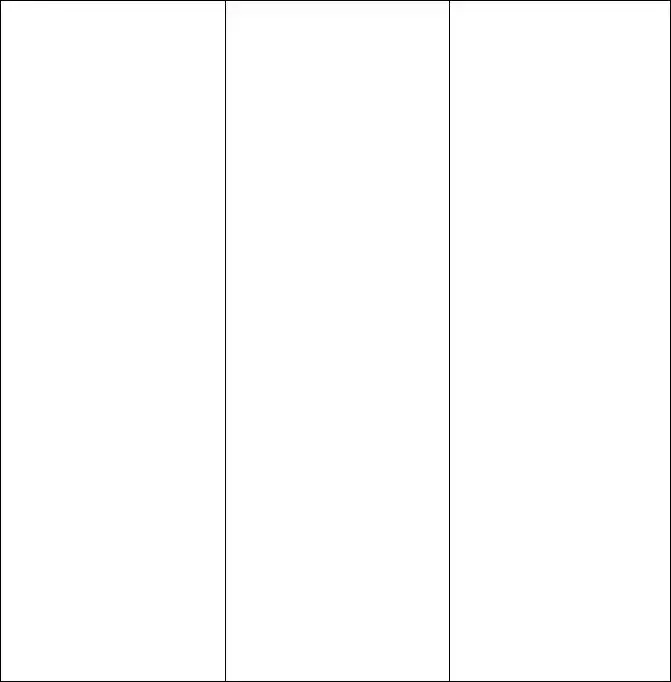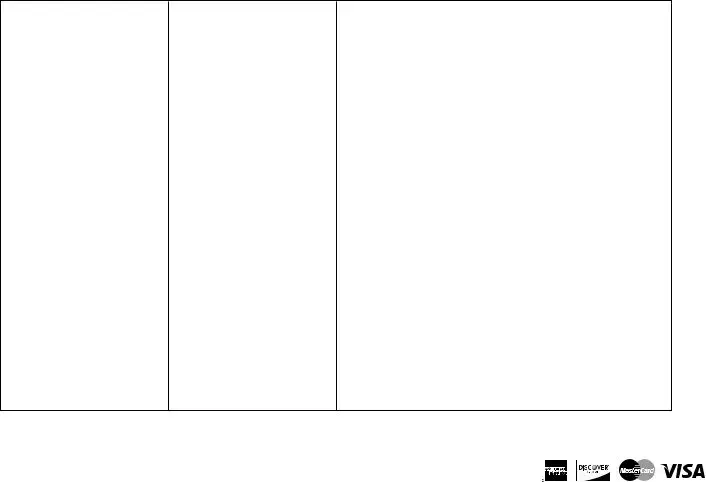return or 100% of the income tax shown on your 2020 Connecticut income tax return. See Informational Publication 2018(19), Farmer’s Guide to Sales and Use Taxes, Motor Vehicle Fuels Tax, Estimated Income Tax, and Withholding Tax.
Members of Partnerships and Shareholders of S corporations: If you are a partner in a partnership or shareholder of an S corporation, you must continue to include your distributive or pro-rata share of income when determining your estimated payments. However, in determining your estimated payments, you take into account any PE Tax Credit you expect to claim for the 2021 taxable year.
In general, you are required to make estimated payments based upon 100% of your prior year tax or 90% of your current year tax. Because of the potential variability in your income and credits, you may prefer to pay 100% of the tax shown on your 2020 return to avoid underpayment interest (2210 interest). You are required to pay the full amount of your 2021 tax liability by April 15, 2022, either with a timely filed return or with an extension request. Otherwise, you may incur late payment penalties.
Annualized Income Installment Method: If your income varies throughout the year, you may be able to reduce or eliminate the amount of your estimated tax payment for one or more periods by using the annualized income installment method. See Informational Publication 2018(11), A Guide to Calculating Your Annualized Estimated Income Tax Installments and Worksheet CT‑1040 AES.
Interest: You may be charged interest if you did not pay enough tax through withholding, estimated payments, or both, by the installment due date, or if any PE Tax Credit reported to you on Schedule CT K‑1, Part III, Line 1, or Schedule CT‑1041 K‑1, Part IV, Line 1, is not sufficient to cover your tax liability by the installment due date. This is true even if you are due a refund when you file your tax return. Interest is calculated separately for each installment. Therefore, you may owe interest for an earlier installment even if you paid enough tax later to make up for the underpayment. Interest at 1% per month or fraction of a month will be added to the tax due until the earlier of April 15, 2022, or the date on which the underpayment is paid.
If you file your income tax return for the 2021 taxable year on or before January 31, 2022, and pay in full the amount computed on the return as payable on or before that date, you will not be charged interest for failing to make the estimated payment due January 15, 2022.
A farmer or fisherman who files a 2021 Connecticut income tax return on or before March 1, 2022, and pays in full the amount computed on the return as payable on or before that date, will not be charged interest for underpayment of estimated tax. See Payment Options, on Page 8.
Form CT‑1040ES (Rev. 01/21)
Worksheet Instructions
Line 2: Enter the total of your estimated allowable Connecticut modifications. See instructions for Schedule 1 - Modifications to Federal Adjusted Gross Income (AGI) of Form CT‑1040 or Form CT‑1040NR/PY for information about allowable modifications.
Social Security Benefit Adjustment: If your required Connecticut income tax return filing status is single or married filing separately, and you expect your 2021 federal adjusted gross income will be less than $75,000, enter as a subtraction the amount of federally taxable Social Security benefits you expect to report on your 2021 federal Form 1040, Line 6b, or federal Form 1040‑SR, Line 6b.
If your required Connecticut income tax return filing status is married filing jointly, qualifying widow(er), or head of household, and you expect your federal adjusted gross income will be less than $100,000, enter as a subtraction the amount of federally taxable Social Security benefits you expect to report on your 2021 federal Form 1040, Line 6b, or federal Form 1040‑SR, Line 6b.
If you expect your federal adjusted gross income will be above the threshold for your filing status, complete the Social Security Benefit Adjustment Worksheet on Page 4 and include the amount from Line F on Line 2.
Line 3: Nonresidents and Part-Year Residents Only: If your Connecticut‑sourced income is greater than your Connecticut adjusted gross income, enter your Connecticut‑sourced income on this line.
Line 5: Apportionment Factor: Nonresidents and part‑year residents, if your Connecticut‑sourced income is greater than or equal to your Connecticut adjusted gross income, enter 1.0000. If your Connecticut‑sourced income is less than your Connecticut adjusted gross income, complete the following calculation and enter the result on Line 5.
Connecticut-Sourced Income |
= Line 5 |
Connecticut Adjusted Gross Income (Line 3) |
Do not enter a number that is less than zero or greater than 1. If the result is less than zero, enter “0”; if greater than 1 enter 1.0000. Round to four decimal places.
Line 7: Residents and Part-Year Residents Only: Enter the estimated allowable credit for income taxes paid to qualifying jurisdictions. Enter “0,” if not applicable. See instructions for Schedule 2 - Credit for Income Taxes Paid to Qualifying Jurisdictions on Form CT‑1040 or Form CT‑1040NR/PY.
Line 9: If you expect to owe federal alternative minimum tax for the 2021 taxable year, you may also owe Connecticut alternative minimum tax. Enter your estimated Connecticut alternative minimum tax liability. See instructions for Form CT‑6251, Connecticut Alternative Minimum Tax Return - Individuals.
Instructions continue on Page 8 |
Page 2 of 8 |
|
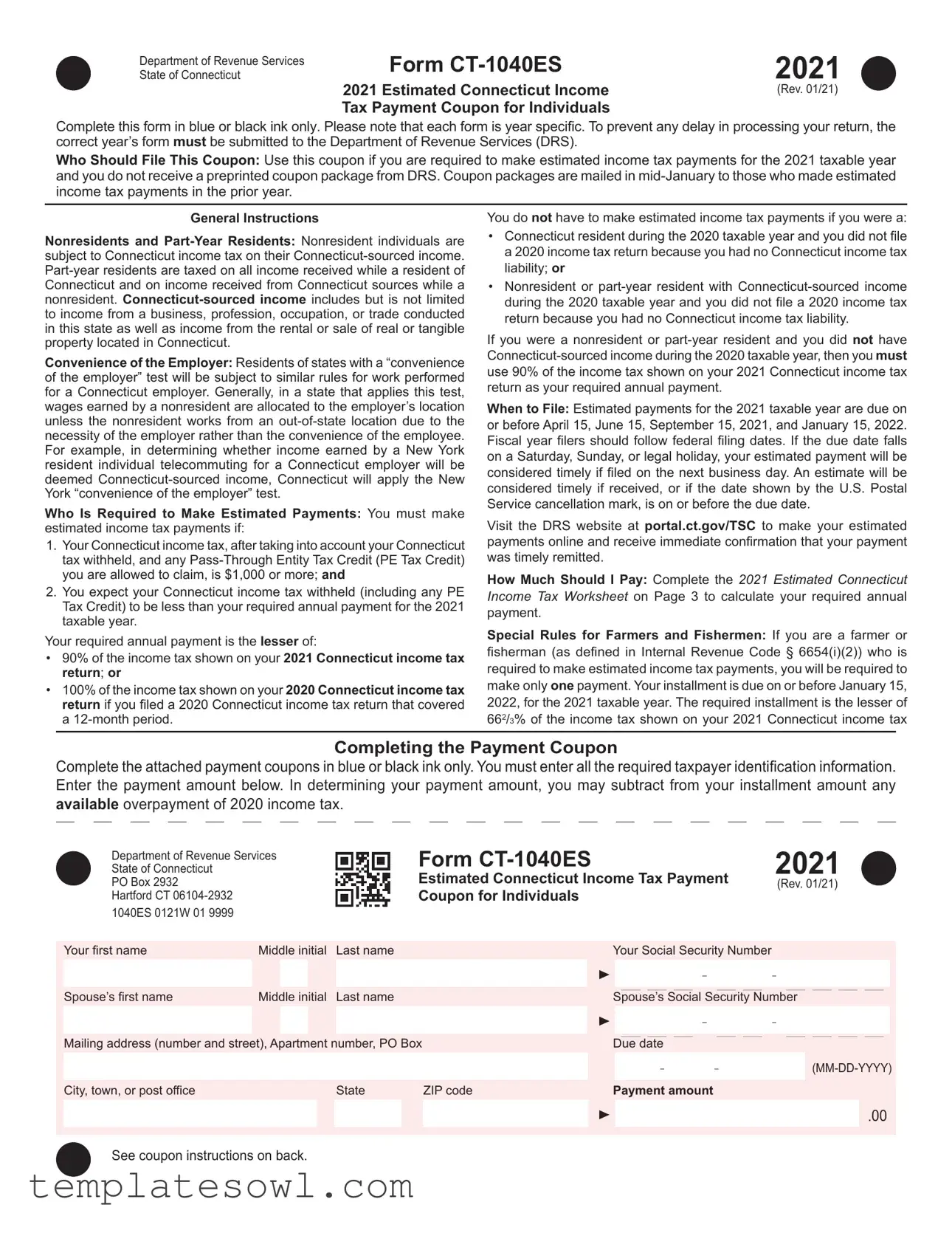

 .00
.00